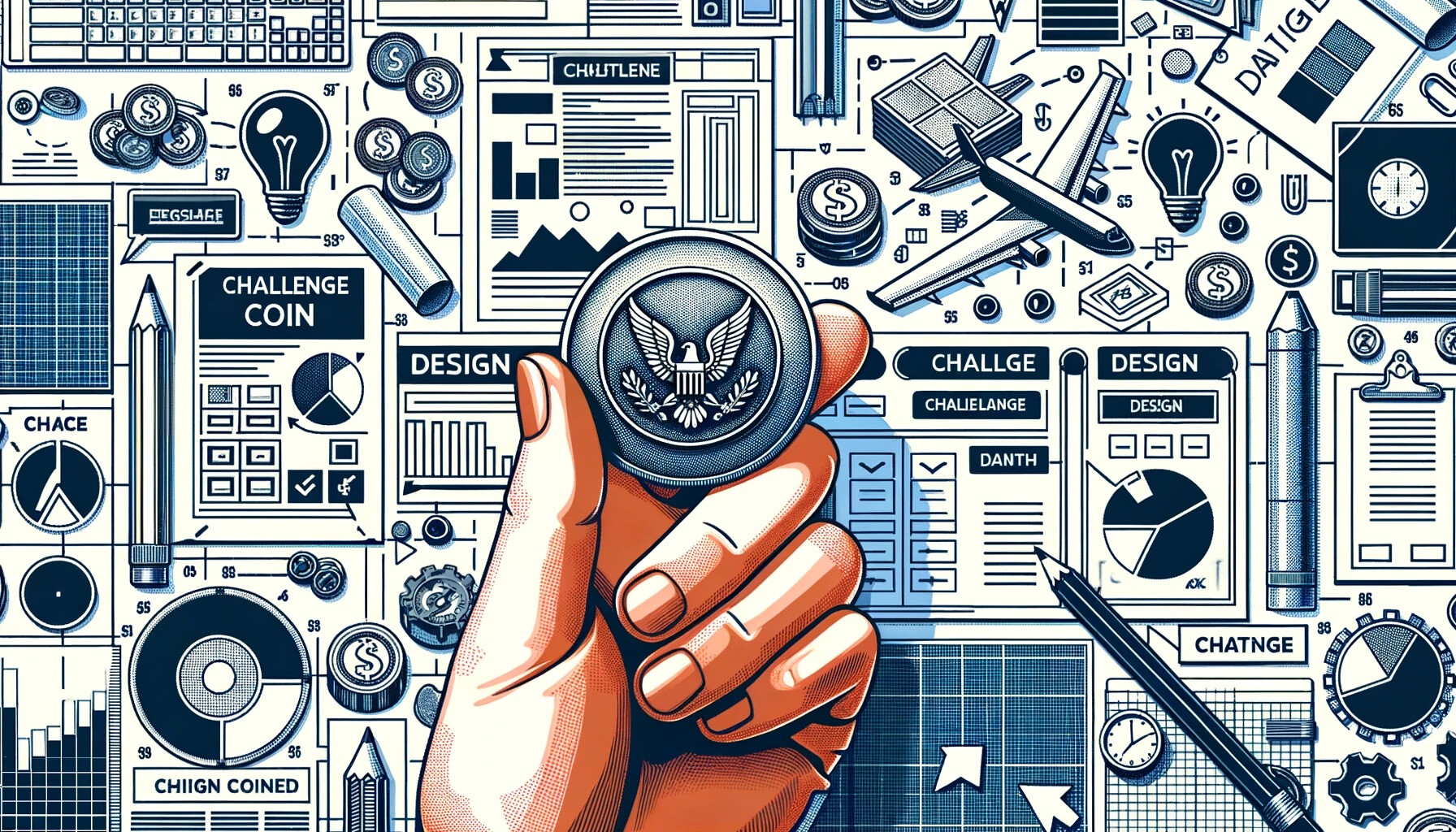
Designing Custom Challenge Coins: Tips and Techniques
Crafting the perfect challenge coin? Learn expert techniques to elevate your design. From organization symbols to event commemorations, make your custom coin truly unique with these helpful tips!
Introduction
Challenge coins hold a special place in the realm of custom mementos and have a long-standing tradition that dates back centuries. These tokens, typically created from metal and adorned with unique designs, carry deep-rooted symbolism and are presented as a mark of honor or camaraderie. The practice of carrying challenge coins originated within military units, but over time it has expanded to include various organizations, clubs, and even businesses.
Definition and Significance of Challenge Coins:
A challenge coin is a specially crafted token often made from metals like brass or zinc alloy that represents loyalty, unity, and pride. These coins commonly feature distinct symbols, emblems, or logos that are intricately engraved or etched onto their surfaces.
Their significance lies in their ability to strengthen bonds between members of an organization or group. The true value of challenge coins lies in the symbolism they carry.
They act as tangible reminders of shared experiences and achievements within a specific community. Possessing a challenge coin not only signifies membership but also serves as a reminder of the values and mission that bind individuals together.
Purpose of Designing Custom Challenge Coins:
Designing custom challenge coins offers organizations an opportunity to create unique pieces that visually represent their identity. Each design element tells a story: the shape chosen can reflect the organization's core values; colors can symbolize different traits or characteristics; logos or emblems can instantly identify its origin; text can convey meaningful mottos or slogans. Furthermore, custom design allows for personalization and tailoring to specific occasions such as anniversaries, milestones, events, or recognition awards within an organization.
By creating custom challenge coins aligned with their vision and purpose, organizations effectively communicate their values while providing members with cherished keepsakes that foster a sense of pride and belonging. In essence, designing custom challenge coins elevates the significance and impact of these tokens and ensures they become cherished symbols within their respective communities.
Historical Background of Challenge Coins
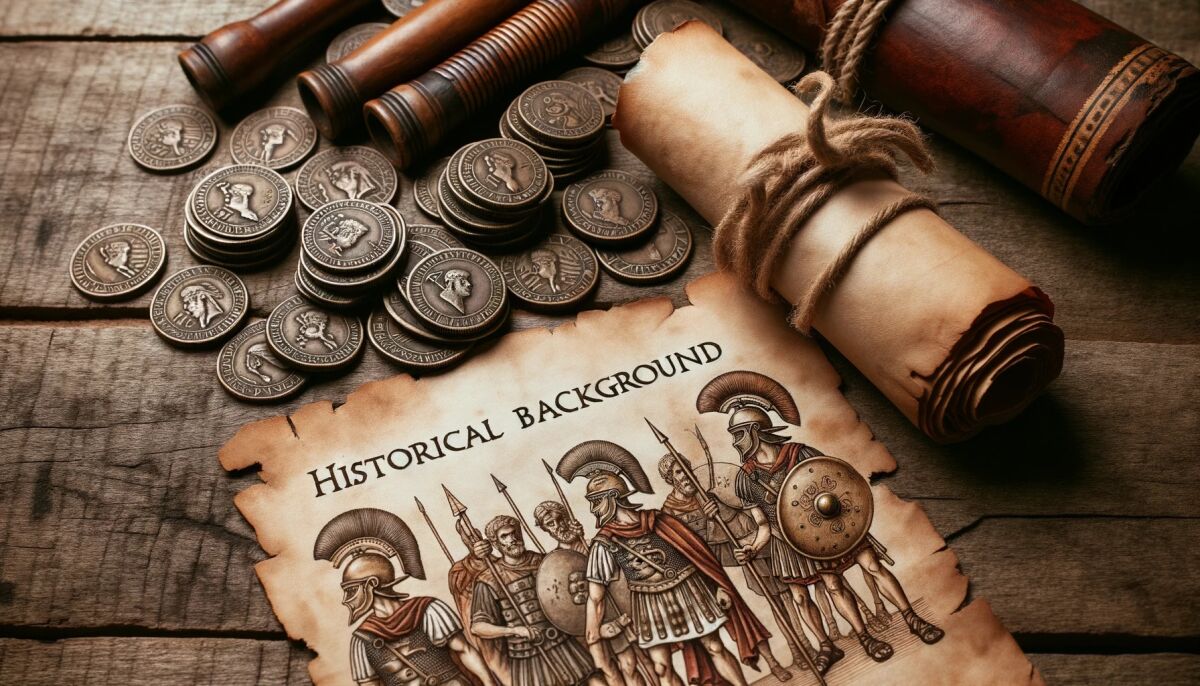
Origins can be traced back to ancient Rome and the military tradition.
The roots of challenge coins can be traced back to ancient Rome, where soldiers were rewarded with specially minted coins for their achievements in battle. These coins were known as "vexilloids" and were presented as a symbol of honor and recognition. The practice of awarding coins has continued throughout history, with different variations emerging in different cultures.
In more recent times, challenge coins gained popularity during World War I. It is said that an American lieutenant had bronze medallions made for all the members of his squadron as a token of camaraderie and remembrance. One pilot, who was shot down and captured by the Germans, managed to escape but was mistaken for an enemy due to lack of identification.
When he presented his medallion to prove his affiliation with the Allies, it saved his life. This incident marked the birth of the "challenge" aspect associated with these coins.
Evolution and adoption by various organizations and groups
Challenge coin traditions gradually expanded beyond the armed forces following their military origins. They started being used by different organizations such as police departments, fire departments, government agencies, and fraternal groups to foster unity among members or commemorate special events or milestones. Over time, challenge coin designs became more intricate and customized to reflect the mission or identity of each organization.
Designs featured emblems or symbols representing values, mottos, or achievements relevant to that particular group. These symbols served not only as a source of pride but also as conversation starters that helped forge connections between individuals within an organization.
Today, challenge coins have permeated various sectors beyond military and governmental institutions - sports teams use them as tokens of encouragement or appreciation; businesses employ them for employee recognition programs; nonprofit organizations create them for fundraising purposes; even social clubs and hobbyist groups have their own unique challenge coins. The versatility of challenge coins as a means of recognition and celebration has contributed to their widespread adoption and continued relevance in contemporary society.
Factors to Consider Before Designing Custom Challenge Coins
Identifying the Purpose and Audience for the Coin
When embarking on the design journey for custom challenge coins, it is vital first to identify the purpose and target audience of the coin. Understanding why you are creating these coins will help shape the overall design and ensure it aligns with its intended use.
For example, if you are designing challenge coins for a military unit, you may want to incorporate symbols or emblems that hold significance within that particular group. On the other hand, if you are designing challenge coins for a corporate event or a non-profit organization, you may want to focus on elements that reflect their mission or values.
It is also crucial to consider who will be receiving these challenge coins. Are they meant for employees as a form of recognition or motivation?
Or perhaps they are intended for members of an organization as a token of membership or camaraderie? By understanding your target audience, you can tailor the design elements accordingly.
For instance, if your audience consists of younger individuals, you might opt for more vibrant colors and contemporary graphics. Conversely, if your audience is more traditional or formal in nature, a classic and elegant design may be more suitable.
Setting a Budget for Design, Production, and Distribution
Before diving into designing custom challenge coins, it is essential to establish a budget that encompasses all stages, from concept development to production and distribution. A comprehensive budget ensures that your designs remain feasible within realistic financial constraints. The budget should account not only for graphic design services but also for material costs such as metals (e.g., brass or copper), additional features like enamel filling or epoxy coating if desired, packaging materials (such as velvet pouches or presentation boxes), shipping costs if applicable, and any other associated expenses.
To determine an appropriate budget range, research various suppliers and manufacturers in the industry to understand the average costs associated with producing challenge coins. It is crucial to strike a balance between quality and cost-effectiveness, ensuring that your envisioned design can be brought to life while staying within financial boundaries.
Researching Existing Designs for Inspiration
Inspiration can be found in the exploration of existing challenge coin designs. By researching and studying a wide range of designs, you can gather ideas, identify trends, and gain insights into what resonates with your target audience. To begin your research, explore online platforms where challenge coin enthusiasts share their collections.
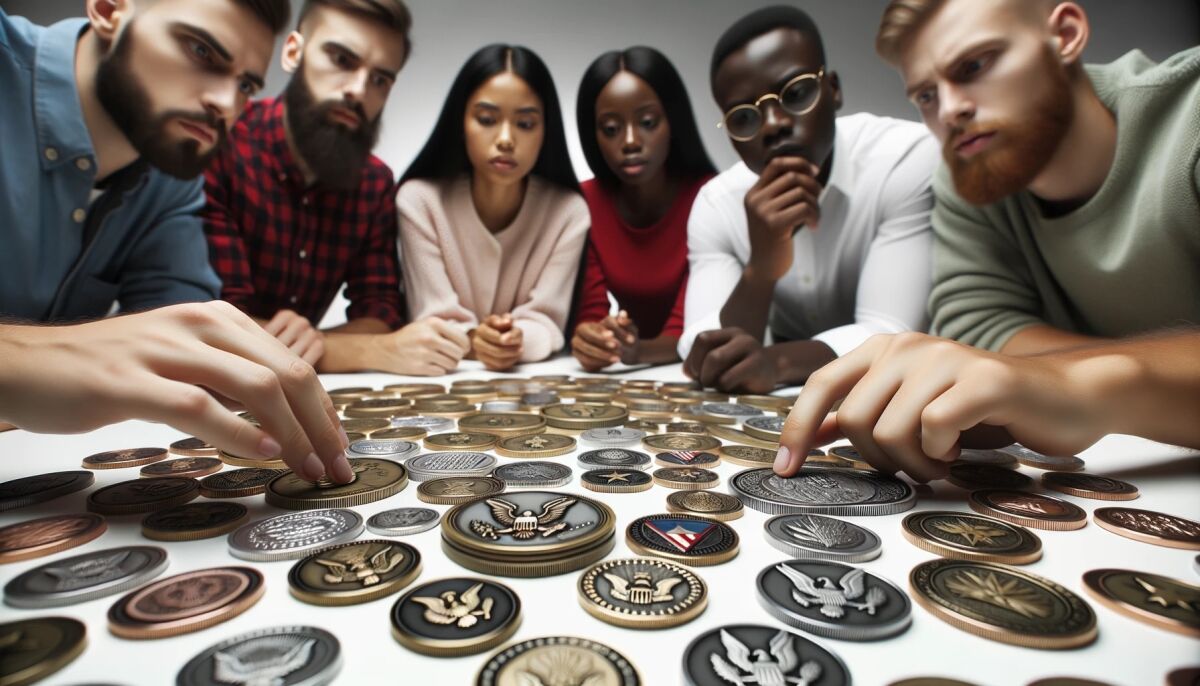
Look for coins relevant to your industry or purpose and analyze their overall design aesthetic, element placement, use of colors, engraving techniques, and any unique features that make them stand out. Additionally, consider visiting local museums or exhibitions that showcase historical coins or military artifacts, as they may provide valuable inspiration.
While research provides a foundation for inspiration, it is important to remember that originality should be a top priority when designing custom challenge coins. Use existing designs as references, but strive to create something unique that represents your organization or purpose effectively.
Conceptualization Phase
In the conceptualization phase of designing custom challenge coins, it is essential to brainstorm ideas that are closely tied to the coin's purpose or theme. Take into consideration the organization or group for which the coin is being designed and its values, mission, or achievements. Engage in brainstorming sessions with key stakeholders or team members who can contribute diverse perspectives and creative input.
Explore different concepts, symbols, and motifs that resonate with the intended audience. Once ideas have been generated, it is crucial to sketch rough drafts to visualize potential designs.
These sketches serve as a starting point for refining and developing the final design. Consider various compositions, layouts, and arrangements of elements on the coin's surface.
Experiment with different proportions, placements, and sizes to achieve visual harmony and balance. Sketching allows you to explore multiple design possibilities before committing to a specific direction.
Elements of a Custom Challenge Coin Design
Several elements must be considered when designing custom challenge coins to create a visually appealing and meaningful design. The shape of the coin is an important decision that can impact its overall aesthetic appeal and symbolism.
While traditional round shapes are commonly used for challenge coins, unique shapes such as shields or dog tags can add distinctiveness. The selected shape should align with the purpose or theme of the coin while considering practicality for display or carrying purposes.
Size is determined by factors such as the desired level of detail on the coin's surface and practicality in terms of portability. Larger coins allow for intricate designs but may be less convenient to carry around daily.
Consider striking a balance between size and level of detail based on your specific requirements. Material selection plays a significant role in determining the look and feel of your custom challenge coin.
Options range from more affordable materials like brass or copper to higher-end options like zinc alloy or even precious metals like silver or gold. The chosen material should align with the desired aesthetic and reflect the perceived value of the coin.
Design Elements
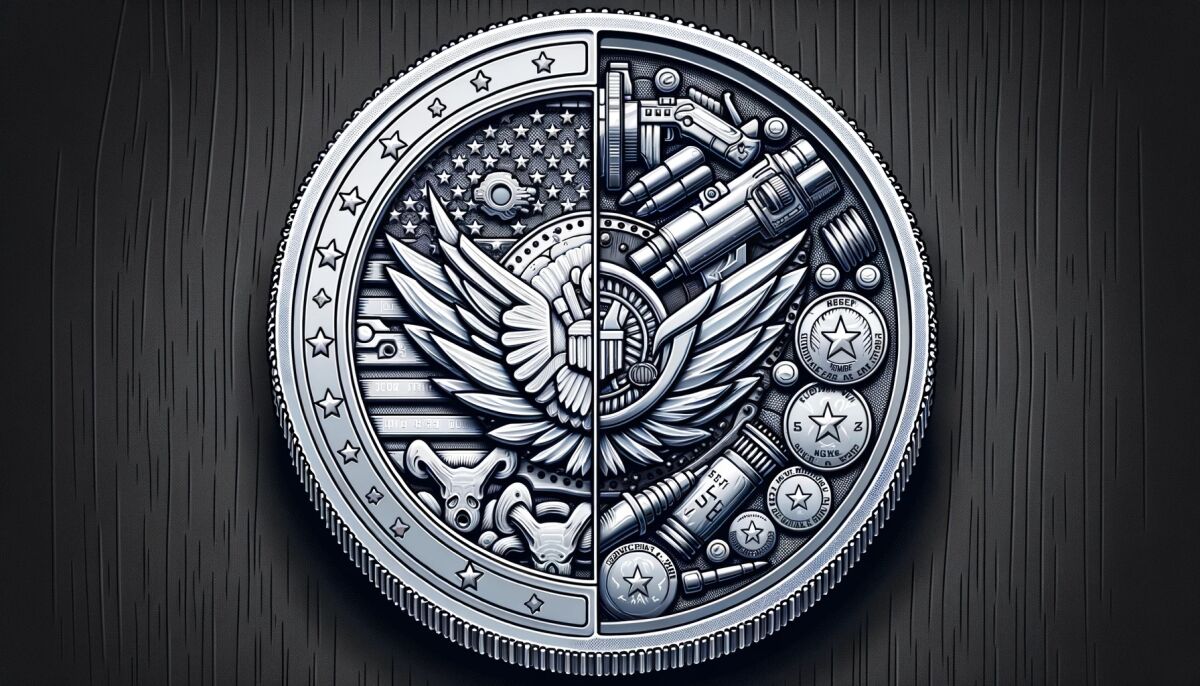
Colors are a crucial aspect of any design, including custom challenge coins. Choose colors that represent the organization or theme being portrayed. Consider using color psychology to evoke specific emotions or associations.
For example, blues may convey a sense of trust or loyalty, while reds can signify strength or passion. Incorporating an organization's logo or emblem into the coin design helps establish a strong visual connection and reinforces brand identity.
Carefully integrate these elements into the overall composition to ensure they harmonize with other design elements seamlessly. Text can be added to challenge coins to convey mottos, slogans, names, or other meaningful messages.
Select fonts that complement the overall design and ensure legibility at different sizes. Consider how text interacts with other visual elements on the coin's surface and strive for balanced typography.
Detailing Techniques
Engraving is a popular technique for adding intricate patterns or designs onto metal surfaces. Skilled craftsmen meticulously carve out details using specialized tools, resulting in depth and texture that enhance the overall aesthetic appeal of the coin. Etching involves utilizing acid etching techniques to create fine details on metal surfaces.
An acid-resistant material is applied over specific areas of the metal before submerging it in an acid solution. The acid eats away at exposed areas, leaving intricate designs etched onto the surface behind.
Relief sculpture is another custom challenge coin design technique that adds three-dimensional sculptural elements onto its surface. Creating raised areas using sculpting materials gives depth and tactile interest to the design while emphasizing key features.
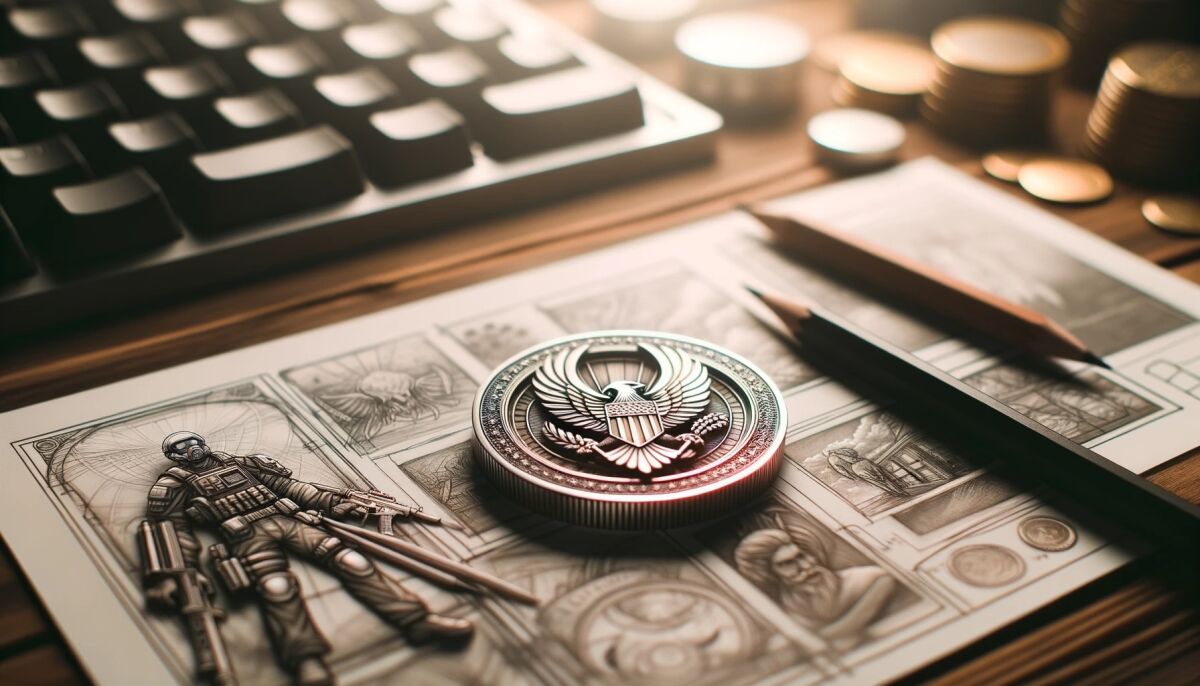
Conclusion
The process of designing custom challenge coins requires careful consideration and attention to detail. From conceptualization to selecting the shape, size, materials, colors, logos/emblems, text placement, and detailing techniques – each element contributes to the final product's overall impact and significance.
Designers can create unique and visually captivating challenge coins that resonate with their intended audience by brainstorming ideas, sketching rough drafts, and focusing on key design elements. Remember, every coin has the potential to become a cherished symbol of honor, accomplishment, and camaraderie – a tangible reminder of shared experiences and meaningful connections.